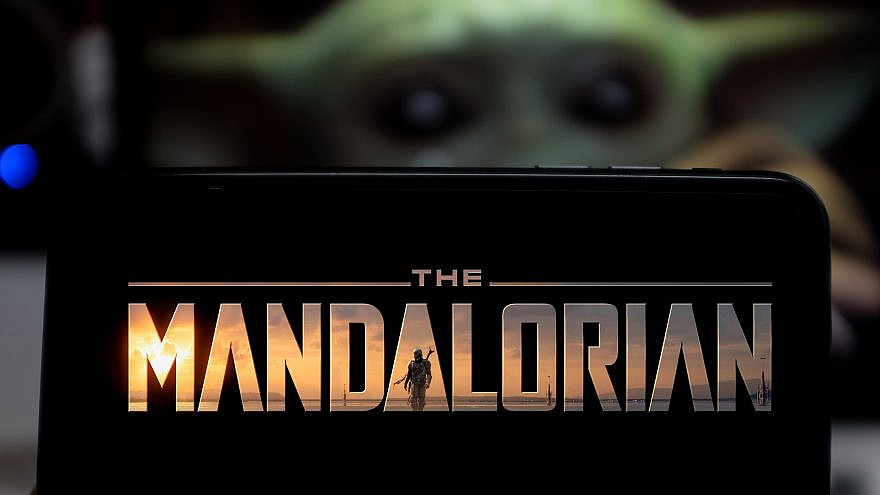Eagle-eyed fans of the Disney series “The Mandalorian” and television writers have noted several instances when the show (the third season ended on April 19), which develops characters similar to those in “Star Wars,” recalls Jewish content.
The series is a production of Golem Creations that recalls the Jewish folklore figure associated with 16th-century Rabbi Judah Loew, Prague’s Maharal. Its producer and lead writer, Jon Favreau, is Jewish.
Others have noted what JNS observed in the show, too—that the Mandalorian mantra “This is the way” could be a translation of the Hebrew halachah; that a character Bo-Katan Kryze’s given name is Hebrew for “come small”; and that her father, a Mandalorian Duke, is named Adonai (one of God’s Hebrew names). And that Mandalorians have a despised profession as bounty hunters, as Jews throughout history served as money-lenders.
Bo-Katan and other returnees are amazed that the planet could still sustain life, which mirrors the surprise that the Israeli desert could bloom.
The eighth and final episode of the show’s third season is the culmination of the Mandalorian reclamation of its homeland after years of exile. That plot development happens, coincidentally, days before Israel’s Independence Day, Yom Ha’atzmaut, and the prior episode, where the Mandalorians undertook the reclamation, transpired on Passover.
The show is not literally Jewish, but readers of Jewish scripture will be reminded of Moses bringing the Israelites to the Promised Land after crossing the Sinai Desert in the Mandalorian “Wandering Jews,” who have sought to find their way home after dispersing across the galaxy.
An amphibious animal in the Mandalorian culture, which they hold to be extinct but which viewers see, the mythosaur—whose image also forms the Mandalorian emblem—evokes a composite of the biblical Leviathan and horned Re’em.
Something of a ‘shamash’ torch …
In the final episode, JNS noticed three more “Jewish” themes.
When the Mandalorians successfully return to their planet, they discover that a faction has remained on the planet all along.
“We never left,” says a “survivor captain” who is part of that faction. This unnamed faction recalls the Samaritans, who did not go into exile, and some Mizrahi Jews, who remained in Jerusalem after the destruction of the Second Temple.
In an effort to rebuild, the faction that remained on the planet also recalls Jewish pioneers of the modern-day Israeli state. The fictive warrior race begins planting crops, as the Jewish National Fund did before Israel’s founding, and the faction even brought back multiple dormant crops, as Israel revived the Judean palm after 2,000 years of obsolescence.
Bo-Katan and other returnees are amazed that the planet could still sustain life, which mirrors the surprise that the Israeli desert could bloom and become the agricultural powerhouse it is today.
Finally, the Mandalorian victors do their best impression of Chanukah, when they light a large fire to celebrate their success. They aren’t lighting a candelabrum—let alone one with nine branches—but there is something of a shamash torch that is used to ignite the blaze, which does have multiple distinct fires.
The show’s directors have said they drew on many sources, and some have reported parallels between Mandalorians and New Zealand Māori (a Māori actor plays Jango Fett and his many clones), Celts and Vikings. Favreau has even cited parallels to the Japanese Samurai. And it’s not improbable to compare the Mandalorian bounty hunters dispatching their targets with efficiency to the Sicariim—an ancient Jewish cloak-and-dagger assassin sect that predates Japanese ninjas.
There are so many apparent parallels between Jews and Judaism that many will eagerly await the fourth season to see what, if any, Jewish-inspired storylines evolve further.


























